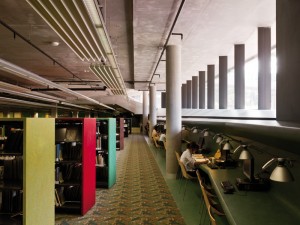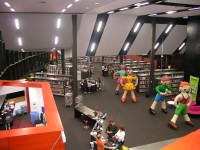Places of Invention
1995 – it marked a threshold between the old and the new millennium, and the buzzword for this millennium was knowledge. The ‘knowledge revolution’ posed tremendous challenges, opportunities and threats to the library profession, in particular. I was working at the State Library of NSW (SLNSW) in Sydney at the time, and was immersed in a vigorous debate about the future of librarianship and the fate of the physical library. A lot happened in 1995, including the publication of what would later become a seminal work – Nonaka and Takeuchi’s The Knowledge Creating Company. This book was a major influence on the scenario work Howard Gwynne and I did with a group of executive and senior managers from across the State Library during 1995. Meeting for six months or so to research the tensions and trends that were likely to impact on the library in some way over the next fifteen years, we crafted four possible scenarios.
In the main, these scenarios described a world in which digital technologies evolved rapidly, challenging libraries to find new offerings or go out of business. The gradual redundancy of ‘library as place’ underpinned three of the four possible futures. But one scenario, which the group called Brand New Day, proposed a synthesis between what seemed (then) like competing tensions. In this scenario, counter-trends had collided conceiving new social and economic practices based on collaboration and sustainability. Applied to the SLNSW, Brand New Day imagined:
a vibrant centre for lifelong learning and innovative, ecologically sustainable business thinking and research…In this sober but hopeful ‘new world’, the State Library has been able to redefine its role as a place where people come, physically and virtually, and as a rich community resource.
Shortly after this I left the State Library of NSW to take up a position in the commercial world. It wasn’t until I re-entered the library world as a consultant in 2008, that I remembered Brand New Day. As I went from one library to another – academic, public, national and state – I saw that the ideas contained in this scenario had, in fact, come to pass. Library as place was far from dead: it was flourishing.
No more gloom and doom
I had a chance to re-read those 1995 scenarios recently (15 years later to be exact!), and it was like entering a time capsule. Reflecting on then and now, it seems to me that libraries have been able to navigate late 20th century gloom and doom about their futures with remarkable success. It has never been a better time to be in libraries, many people have told me. My mission to track what has happened and why, culminated in a paper I presented in February at the ALIA Information Online Conference 2011. You can read the paper by clicking here.




